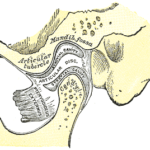
Temporomandibular disorders are an umbrella group of musculoskeletal and neuromuscular conditions affecting the temporomandibular joint masticatory muscles and associated structures. They are considered to affect between 1-12% of the population and are a common cause of chronic pain of nondental origin in the orofacial area. However, because of a lack of homogeneity in diagnostic criteria the actual prevalence of TMD is uncertain.
The aim of this review was to evaluate the prevalence of temporomandibular joint disorders (TMD) among the general population.
Methods
Searches were conducted in the PubMed, Embase, Latin American and Caribbean Health Sciences (LILACS), Scopus, Web of Science, Google Scholar, Open Grey, and ProQuest database. Cross-sectional studies evaluating the prevalence of TMD evaluated using the search diagnostic criteria for temporo- mandibular disorders (RDC/TMD) or diagnostic criteria for temporomandibular disorders (DC/TMD) were considered. Two reviewers independently selected studies and assessed risk of bias using the Joanna Briggs Institute Critical Appraisal Checklist for Studies Reporting Prevalence Data. A single reviewer extracted data which was cross-check by a second reviewer. The prevalence of TMJD was expressed as relative or absolute frequencies with 95% confidence intervals (CIs) and meta-analysis undertaken to provide an overall pooled prevalence.
Results
- 21 studies involving a total of 11,535 patients were included.
- 17 studies used the RDC/TMD criteria and 4 studies the DC/TMD criteria.
- Studies were undertaken in 16 different countries with sample sizes ranging from 30 – 1643 patients.
- 10 studies were considered to be at low risk of bias, 7 at moderate risk and 4 at high risk.
- The overall prevalence of TMD for adults was 29.3% for RDC/TMD, 38.8% for DC/TMD, and 31.1% for the grouped criteria (RDC + DC). While for children/ adolescents was obtained 11% for the RDC/TMD and only.
- For adults the most prevalent individual diagnosis was disk displacement with reduction (DDwR).
| RDC/TMD Criteria | RDC/TMD and DC/TMD Criteria | ||||
| No. of studies | Prevalence (95%CI) | No. of studies | Prevalence (95%CI) | ||
| Adults | |||||
| Overall – any joint diagnosis | 4 | 29.3% (6.1–72.3) | 8 | 31.1% (10.6–63.3) | |
| Overall – disk displacements | 6 | 12.9% (5.0–29.5) | 9 | 19.1% (9.4–34.9) | |
| Disk displacement with reduction | 2 | 19.8% (6.1–48.5) | 4 | 25.9% (13.0–44.9) | |
| Overall – degenerative joint disease (osteoarthritis and osteoarthrosis) | 3 | 17.4% (2.0–68.1) | 6 | 9.8% (2.2–34.3) | |
| Children and adolescents | |||||
| Overall – any joint diagnosis | 11 | 11.3% (7.6–16.4) | |||
Conclusions
The authors concluded: –
The overall prevalence of temporomandibular joint disorders was approximately 31% for adults/elderly and 11% for children/adolescents, and the most prevalent TMJD was DDwR.
Comments
The authors have searched a good range of databases including only those studies that used recognised TMD diagnostic criteria. While the reviews highlight that adult patients were selected from people registered with the local health care system rather than orofacial pain clinics or other specialised centres. The overall prevalence of TMD for adults with RDC/TMD Criteria was found to be higher than previous reviews at 29.3% (95%CI: 6.1–72.3%) although the confidence intervals are wide. The authors do however highlight that most TMD cases are asymptomatic and only a small proportion of patients seek treatment.
Links
Primary Paper
Valesan LF, Da-Cas CD, Réus JC, Denardin ACS, Garanhani RR, Bonotto D, Januzzi E, de Souza BDM. Prevalence of temporomandibular joint disorders: a systematic review and meta-analysis. Clin Oral Investig. 2021 Feb;25(2):441-453. doi: 10.1007/s00784-020-03710-w. Epub 2021 Jan 6. PMID: 33409693.
Review protocol on PROSPERO
Other references
Dental Elf – 14th Dec 1018
